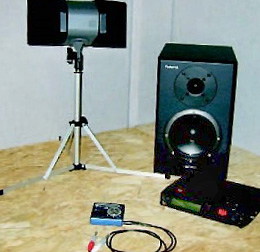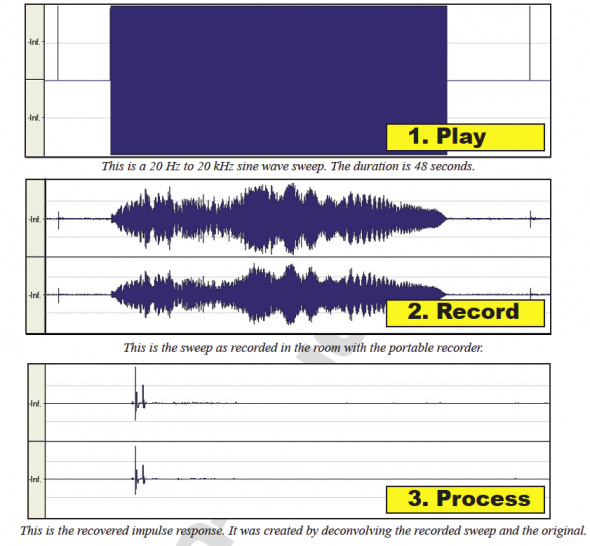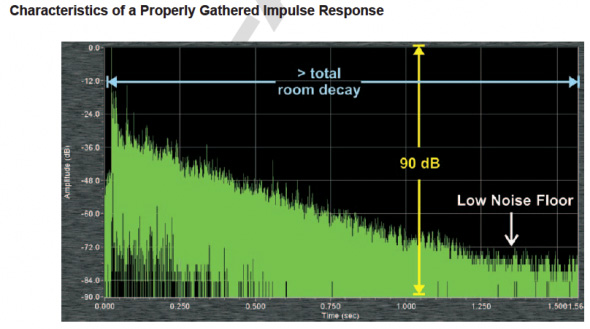
This means to take one file (time or frequency data) and encode it with the characteristics of another (time or frequency data).
If one file is dry program material, and the other is an IR gathered in a room, the convolution will yield what the dry program material would sound like when encoded with the acoustic characteristics of the live space for that specific position.
The entire process of convolving an IR with dry program material and then listening to the result is known as auralization.
Ideally, the IR should be binaural (two channels gathered with a stereo microphone).
This preserves many of the localization cues required by listeners to pinpoint a sound in three dimensional space.
The benefits of auralization are obvious:
• Speech or music can be evaluated without making actual recordings of talkers or musicians.
• The IR can be modified to simulate acoustical changes to the space. Auralization will then simulate the benefits of the changes.
• There are signal-to-noise advantages over recordings. If the IR is gathered in a noise-immune manner, then the auralizations will have a lower noise floor than actual recordings made in the space.
• The IR is a complete documentation of the room/ system response at one listener position. It can be reprocessed in the future as better algorithms become available.

Regardless of what measurement platform you use, a properly gathered IR should have the following characteristics:
* 1. When displayed on a dB vertical scale, the data should fill the screen from top left to bottom right.
* 2. The full decay of the system must be measured, meaning that the decaying tail must not be truncated.
* 3. For auralization purposes, good signal-to-noise ratio is required. I like to have at least 90 dB of dynamic range, and see the decaying energy fade into the noise floor at -80 to -90 dBFS (See below).

Eliminating the Computer
Deconvolution is the opposite of convolution. A known stimulus is played into a room and the response recorded.
